- Not logged in
- Contributions
- Request account

Traveller's Tales
Traveller's Tales is a British video game developer that was founded in 1989 by Jon Burton and was established a year later. In 2005, it merged with Giant Interactive Entertainment to form publishing studio, TT Games . Traveller's Tales' first game was Leander (known as Legend of Galahad for Sega Genesis) and was known for games such as Puggsy , Mickey Mania , and Rascal .
1st Logo (November 1991)

Visuals: On a black background, there is a brown desk outlined in the shape of a shield that is containing sheet music, an old flute, a candle wax, a bottle of ink and its tip, a scroll, a paint set, and an old journal having the Traveller's Tales symbol (which shows two stylized "T"s facing each other) on it. The words "TRAVELLERS TALES" are above on the shield.
Technique: A still, computerized graphic.
Audio: The opening theme of the game.
Availability: Can be found on Leander for Amiga.
2nd Logo (23 March 1993-1995)

Visuals: Over a black background, there are two stylized " T "'s spinning and slowly zooming away from us. Suddenly, a meteor appears in the background and flies straight at the screen and blows up, thus turning the screen orange . The orange screen fades out and the " T "'s are in flames, with " Travellers " at the top and " Tales " at the bottom.
- On the SNES version, the logo is already there and is shifted to the right with the words " DEVELOPED BY " next to it. Above it is the Skeleton enemy, who drops down at first, then spins its head with its foot causing it to come off and fly away. A second later, its body explodes into pieces.
- There is a still version in which the "TT" is golden and is inside of a border decorated with a purple marble-like texture. Plus, "TRAVELLERS" and the "TT" are underlined and "TALES" is in spaced-out letters. "A" is above the logo, while "PRODUCTION" is below.
Technique: CGI. Sprite-based animations on the Mickey Mania variants.
Audio: A loud "BANG" sound when the meteor explodes, followed by the sound of fire.
Audio Variants:
- The SNES version has the exploding effect when the Skeleton explodes into pieces; both sound effects were also used in the game.
- The still version has silence or the opening theme of the game.
Availability:
- This logo can be found on Mickey Mania: The Timeless Adventures of Mickey Mouse and Puggsy for Sega Genesis.
- The standard variant is seen on Puggsy for Sega CD as well.
3rd Logo (Quentin Cerebellum Townsend the Third) (31 March 1995-22 April 2005)

A comparison between the original design of Quentin (left) and the 2001 redesign (right)
Visuals: On a black background, there is a CGI raccoon, named Quentin Cerebellum Townsend the Third [1] , with big eyes, long, stripy ears, a jovial look on his face, a lion-like tail, and a farmer's outfit with bracelets on his wrists and ankles. He is resting on the tip of the edge of a cliff, holding a red handkerchief with white polka-dots in one hand. His other hand is on a gravestone with a left arrow and the initials "TT" on it. The raccoon nods his head while the logo rotates. A gold - orange moon appears rising behind him and the cliff. The words "Traveller's Tales", in a Medieval-style font with a gold outline, later fade in.
- The still logo was designed by Rodney Matthews, who also designed the original version of the 1996 Bizarre Creations logo.
- Quentin was supposed to be the protagonist of Haven: The Call of the King , but had to be changed to a human character, due to the raccoon looking similar to Ratchet from Ratchet & Clank (even though the Haven raccoon was developed first, according to a demo of the game from 2001 ).
- Quentin also appears as the mascot of the YouTube channel GameHut , which is run by Traveller's Tales' founder, Jon Burton. The original artist, Rodney Matthews, was brought back to make a new design for Quentin.
- The logo's origins lie in a painting that Burton commissioned Matthews to do at a Christian rock concert. Here is a GameHut unboxing of the original painting.
- According to Burton, the logo was ultimately retired in favor of the current logo because the details blur together when moved past at high speeds, making it illegible.
- There is a still artwork version of the logo that exists on a white background or a black background.
- There is a still version with the logo in an isometric view floating on water and swaying on it.
- On the Japanese release of Mickey Mania: The Timeless Adventures of Mickey Mouse , a copyright stamp is at the top of the screen and the words " DEVELOPED BY " are at the bottom. A second later, one of the ghosts from the Mickey Mouse short "Lonesome Ghosts" (who also play roles as enemies) appears and zaps the words " DEVELOPED BY ", which turns them into a wordmark of the logo. The ghost then rolls up like a blind and disappears.
- On a demo for the PS1 version of the A Bug's Life video game, Quentin (with a slightly different appearance and is also motionless) and the cliff rotate from the right while zooming in. The text fades in and the moon rises shortly afterwards.
- On the PS1 and PC versions of the A Bug's Life video game, the camera pans from an exotic valley with some rocks, flowers and a bridge and reaches a cliff, where Quentin is. He gives a friendly look as the moon behind him. The text then appears next to him and the logo ends with a zooming iris effect.
- Starting from the European releases of the Buzz Lightyear of Star Command video game in early 2001, Quentin was drastically redesigned, as he has a different, canine-like face with slightly smaller eyes and a less curvy snout, slightly bigger ears that are flopped down, a lankier body, an uninterested look on his face, and pink pads on his feet. The logo also rotates slightly slower.
- On Muppet RaceMania , the studio's website URL "www.t-tales.com" appears at the bottom of the screen midway through the logo and fades out after the logo forms.
- On Crash Bandicoot: The Wrath of Cortex, the logo (with the 2001 version of Quentin) takes place on the opening space background, with the moon part of the background and the cliff (the initials and the arrow on the gravestone are now facing the opposite direction) floating past it. The URL also appears when Quentin is on screen.
- On Haven: The Call of the King, the logo (with the 2001 version of Quentin, as well as the URL underneath it) takes place in outer space like in the Wrath of Cortex variant, except the moon is replaced with the planet Earth. Shortly after, the camera zooms past Quentin's head and the game's title screen appears.
- On the home console versions of the Finding Nemo video game, the print logo rises up from a body of water and floats on it. The website URL appears below the logo shortly afterwards.
- On Crash: Twinsanity , the 2001 version of Quentin (with his ears now perked up) appears on a white background. The cliff and Quentin move to the right to leave room for the Traveller's Tales text to fade, but spread out and having "O X F O R D S T U D I O" under it. Above it appears a silhouette of Oxford's skyline.
Technique: 3D animation.
Audio: A cheerful-sounding camp-like theme with a faint choir, composed by Aaron Szpakowski.
- The Japanese release of Mickey Mania variant has a 16-bit sparkling noise when the ghost appears and a 16-bit warping noise when it disappears.
- The A Bug's Life demo variant is silent.
- The A Bug's Life variant has birds chirping followed by a whimsical musical composition.
- The Crash Bandicoot: The Wrath of Cortex variant has Dr. Cortex (voiced by Clancy Brown) saying "Developed by Traveller's Tales".
- The Finding Nemo variant has sounds of the ocean with waves crashing.
- On other games, it's silence or the opening theme of the game.
- The still version can be found on Toy Story for Genesis and SNES, Mickey's Wild Adventure for PS and Sonic 3D Blast for Genesis and Saturn. It made its last appearance on the PS2, Xbox and PC versions of Lego Star Wars: The Video Game (the GameCube version uses the next logo). It is also retained on the Sonic's Ultimate Genesis Collection ( Sega Mega Drive Ultimate Collection in Europe) port of Sonic 3D Blast , despite the compilation being released after the next logo was introduced.
- The still water version was used in Toy Story 2: Buzz Lightyear to the Rescue and A Bug's Life for N64, Rascal for PS, and Sonic R for Saturn and PC (although in a rare case of video game logo plastering, the last one is replaced by the current logo on the port included in Sonic Gems Collection for GameCube and PS2, despite the rest of the port being left untouched).
- The animated version is seen on many PS and PS2 games including Toy Story 2: Buzz Lightyear to the Rescue , Buzz Lightyear of Star Command , and Toy Story: Racer .
- ↑ https://x.com/JonTt/status/1147175927023120384
- BBC Multimedia (UK)
- British video game logos
- United Kingdom
- Video game logos
- Warner Bros. Interactive Entertainment
- Warner Bros.
- Warner Bros. Discovery
- Pages using Tabber parser tag
- This page was last edited on 19 June 2024, at 12:00.
- Content is available under Creative Commons Attribution-ShareAlike 4.0 International (CC BY-SA 4.0) unless otherwise noted.
- Contact AVID
Traveller's Tales
Background : Traveller's Tales is a British video game developer that was founded in 1989 by Jon Burton and was fully established a year later. In 2005, it has established it's publishing division, "TT Games". In 2007, it was acquired by Warner Bros. Interactive Entertainment and is now a development division since then and is currently known for the LEGO ® games. It's first game was Leander (known as Legend of Galahad for Genesis) and was known for games such as Puggsy , Mickey Mania and Rascal , and was known on video games based on movies such as Toy Story , a bug's life and Finding Nemo .
1st Logo [ ]
Nicknames : "TT", "The Desk"
Logo : On a black background, we see a brown desk outlined in the shape of a shield that is containing sheet music, an old flute, a candle wax, a bottle of ink and its tip, a scroll, a paint set, and an old journal having the Traveller's Tales symbol (which shows two "T"s facing each outer) on it. Tthe words "TRAVELLERS TALES" is above on the shield.
FX/SFX : None.
Music/Sounds : The opening theme of the game.
Availability : Seen on Leander for Amiga.
Editor's Notes : None.
2nd Logo [ ]
(1993-1995)
Nicknames : "TT II", "Puggsy's Ship"
Logo : Over a black background, we see two dark blue, stylized "T's" spinning and slowly zooming away from us. Suddenly, a meteor appears in the background and flies straight at the screen and blows up, thus turning the screen orange. The orange screen fades out and the "T's" are in flames, with "Travellers" at the top and "Tales" at the bottom.
- On Mickey Mania: The Timeless Adventures of Mickey Mouse , the copyright stamp is at the top of the screen and the words "DEVELOPED BY" are at the bottom. A second later, one of the ghosts from the Mickey Mouse short, "Lonesome Ghosts" (who also play roles as enemies) appears and zaps the words "DEVELOPED BY", which turns them into a grayish, stone crested version of the Traveller's Tales "TT" logo, with what would be Puggsy's ship wedged inside. The ghost then rolls up like a blind and disappears. The words "TRAVELLERS TALES" use the same font as the previous logo. On the SNES version, the logo is already there and is shifted to the right with the words, "DEVELOPED BY" next to it. Above it is the Skeleton enemy, who drops down at first, then spins it's head with it's foot causing it to come off and fly away. A second later, it's body explodes into pieces.
- There's a still version in which the "TT" is golden and is inside of a border decorated with purple marble-like texture. Plus, "TRAVELLERS" and the "TT" are underlined and "TALES" is in spaced-out letters. "A" is above the logo, while "PRODUCTION" is below.
FX/SFX : CGI animation. The character's animations on the Mickey Mania variants.
Music/Sounds : We hear a loud "BANG" sound when the meteor explodes, followed by the sound of fire. The Mickey Mania variant had a 16-bit sparkling noise when the ghost appears and a 16-bit warping noise when it disappears. The SNES version has the exploding effect when the Skeleton explodes into pieces; both sound effects were also used in the game. The still version has silence or the opening theme of the game.
Availability : Can be found on Mickey Mania: The Timeless Adventures of Mickey Mouse and Puggsy for Sega Genesis. The standard variant is seen on Puggsy for Sega CD as well.
3rd Logo [ ]
(1994-2006)
Nicknames : "Raccoon on the Cliff", "Traveller's Tales Raccoon"
Logo : On a black background, we see a CGI raccoon lying on an edge of a cliff resting on the tip of the edge holding a red handkerchief with white polka-dots and his other hand is on the gravestone with a left arrow and the initials, "TT" on it. The raccoon nods his head while the logo rotates. A yellow-orange moon appears rising behind him and the cliff. The words: "Traveller's Tales" are in a Medieval style font with the yellow outline, later fade in.
Trivia : The still logo was designed by Rodney Matthews, who also did the original version of the 1996 Bizarre Creations logo. It can also be seen on his website from here under the "Logos and Lettering" section.
- There's a still artwork version of the logo that exists on a white background or a black background.
- There's a version with logo in isometric view floating in the water and swaying on it.
- There's the animated version of the water variant where the logo rises up from the water. The website URL appears below the logo.
- Starting in 2000, the studio's website URL: www.t-tales.com was added below the logo.
- On Crash: Twinsanity , there is a different raccoon in place of the regular one on a white background. The cliff and raccoon move to the right to leave room for the Traveller's Tales text to fade, but spread out and having "O X F O R D S T U D I O" under it. Above it appears a silhouette of Oxford's skyline.
FX/SFX : CGI.
Music/Sounds : A camp-like theme.
Availability : The still version can be found on Toy Story for Genesis and SNES, Mickey's Wild Adventure for PS and Sonic 3D Blast for Genesis and Saturn. The still water version was used in a bug's Life and Toy Story 2 for N64, Rascal for PS1, and Sonic R for Saturn and PC (although in a rare case of video game logo plastering, the last one is replaced by the current logo on the port included in Sonic Gems Collection for GameCube and PS2 despite the rest of the port being left untouched). The animated water version was used in Finding Nemo for GameCube, PS2 and Xbox. The animated version is seen on many PS1 and PS2 games including Toy Story 2 . The URL variant of the standard logo can be found on Muppet Race Mania for the PS1.
4th Logo [ ]
Nicknames : "TT III", "The new TT", "Tt"
Logo : An orange "T" letter stands on a place, turning around. The blue lowercase "t" jumps into the screen and comes near to the big "T", leaning on it. The big "T" taps the small letters on the "head". The words "Traveller's" and "tales" appear above and below, respectively, in thin black font.
- On Nintendo DS games, the logo is still on black background. The name is replaced with "GAMES".
- On Transformers: The Game , the letters are forming from two cars.
- On What's Your News? , it is same as the DS variant, but with GAMES replaced by animation .
- At the end of the credits of console LEGO ® games, the Lego men build the logo from blocks.
- On LEGO ® Harry Potter: Years 1-4 for DS, the logo appears as a sketch on a piece of parchment.
- On the trailer for Lego Harry Potter , it is gray-blue and placed over the thundering background.
- On the Sonic Gems Collection port of Sonic R , the logo is still on a white background.
FX/SFX : The moving letters.
Music/Sounds :
- The sounds of jumping letters and various squeaks.
- The sounds of running cars and metal conversion for Transformers variant.
- On the LEGO ® variant, we hear the construction workers build. At the end, after the one worker pushes the lowercase "t", we hear a timpani roll. At the end of the roll, just faintly, a sound like Legos falling apart can be heard.
Availability : Common and current for the LEGO ® variant, as it's seen on every LEGO ® game since 2005. The normal variant, however, is extremely rare, as it only seems to appear on Super Monkey Ball Adventure .
- 1 Paramount Pictures/Other
- 2 20th Century Studios/Other
- 3 Warner Bros. Pictures/Other
Traveller's Tales (UK)
- Edit source
Traveller's Tales was a British video game developer that was founded in 1989 by Jon Burton and was fully established a year later. In 2005, it has established its own publishing division, "TT Games".
1st Logo (March 23, 1993-October 1, 1994) [ ]
Nicknames: "TT", "Puggsy's Ship"
Logo: Over a black background, we see two stylized "T"'s spinning and slowly zooming away from us. Suddenly, a meteor appears in the background and flies straight at the screen and blows up, thus turning the screen orange. The orange screen fades out and the "T"'s are in flames, with "Travellers" at the top and "Tales" at the bottom.
- On Mickey Mania: The Timeless Adventures of Mickey Mouse , a copyright stamp is at the top of the screen and the words "DEVELOPED BY" are at the bottom. A second later, one of the ghosts from the Mickey Mouse short "Lonesome Ghosts" (who also play roles as enemies) appears and zaps the words "DEVELOPED BY", which turns them into a grayish, stone crested version of the Traveller's Tales "TT" logo, with what would be Puggsy's ship wedged inside. The ghost then rolls up like a blind and disappears. The words "TRAVELLERS TALES" use the more basic font of the same font family from the 1991 logo. On the SNES version, the logo was already there and was shifted to the right with the words "DEVELOPED BY" next to it. Above it, we see the Skeleton enemy, who drops down at first, then spins its head with its foot causing it to come off and fly away. A second later, its body explodes into pieces.
- There was a still version in which the "TT" is golden and was inside of a border decorated with a purple marble-like texture. Plus, "TRAVELLERS" and the "TT" are underlined and "TALES" was in spaced-out letters. "A" was from the top of the logo, while "PRODUCTION" was from the bottom.
FX/SFX: CGI animation. The character's animations on the Mickey Mania variants.
Music/Sounds: A loud "BANG" sound when the meteor explodes, followed by the sound of fire.
Music/Sounds Variants:
- The Mickey Mania variant has a 16-bit sparkling noise when the ghost appears and a 16-bit warping noise when it disappears. The SNES version has the exploding effect when the Skeleton explodes into pieces; both sound effects were also used in the game.
- The still version has silence or the opening theme of the game.
Availability: Can be found on Mickey Mania: The Timeless Adventures of Mickey Mouse and Puggsy for Sega Genesis. The standard variant was seen on Puggsy for Sega CD as well.
Editor's Note: None.
2nd Logo (November 22, 1995-October 1, 2004) [ ]
Nicknames: "Raccoon on the Cliff", "Traveller's Tales Raccoon", "The TT Gravestone", "Manfield the Raccoon", "CGI Raccoon", "Angry Raccoon", "Cuter Raccoon"
Logo: On a black background, we see a CGI raccoon (named Manfield) with big eyes, long, stripy ears, a jovial look on his face, a lion-like tail, and a farmer's outfit with bracelets on his wrists and ankles. Manfield was resting on the tip of the edge of a cliff, holding a red handkerchief with white polka-dots in one hand. His other hand was on a gravestone with a left arrow and the initials "TT" on it. The raccoon nods his head while the logo rotates. A yellow-orange moon appears rising behind Manfield and the cliff. The words "Traveller's Tales", in a Medieval-style font with a yellow outline, later fade in. After a few seconds, we fade to Manfield the raccoon, this time in a squashy, strechy, kinetic 2D classic-animated style, does the following poses listed.
- (November 22, 1995-November 7, 1996) Manfield was on the right side facing left with arms stretched out.
- (September 16, 1997-March 27, 1998) Manfield was in the center facing right with arms stretched out.
- (November 18, 1998-November 22, 1999) Manfield was holding a large tooth.
- (September 26, 2000-October 29, 2001) Manfield was seen sitting in a backdrop of concentric circles.
- (Between 2000 and 2001, two different versions of Manfield are used, illustrating the evolution of the character.)
- (April 16, 2002-October 1, 2004) Manfield was sitting on a fence.
- The still logo was designed by Rodney Matthews, who also did the original version of the 1996 Bizarre Creations logo.
- The raccoon that appears in the logo was supposed to be the protagonist of Haven: The Call of the King , but had to be changed to a human character, due to the raccoon looking very similar to Ratchet from Ratchet & Clank (even though the Haven raccoon was developed first, according to a demo of the game from 2001).
- The raccoon also appears as the mascot of the YouTube channel GameHut, which was run by Traveller's Tales' founder, Jon Burton.
- There is a still artwork version of the logo that exists on a white background or a black background.
- There is a still version with the logo in an isometric view floating on water and swaying on it.
- On the videogame adaptation of Rascal , the circles are blue/red while the backdrop was scarlet red.
- On a demo for the PS1 version of the A Bug's Life video game, the raccoon (with a slightly different appearance and is also motionless) and the cliff rotate from the right while zooming in. The text fades in and the moon rises shortly afterwards.
- On the PS1 and PC versions of the A Bug's Life video game, the camera pans from an exotic valley with some rocks, flowers and a bridge and reaches a cliff, where the raccoon was. He gives us a friendly look as we see the moon behind him. The text then appears next to him and the logo ends with a zooming iris effect.
- On European releases of the Buzz Lightyear of Star Command videogame, the raccoon has a noticably different appearance, as he has a different, canine-like face with slightly smaller eyes and a less curvy snout, slightly bigger ears that are flopped down, a lankier body, an uninterested look on his face, and pink pads on his feet. The logo also rotates slightly slower.
- On Toy Story Racer , the circles are purple/green while the background was orange.
- On the videogame adaptation of The Weakest Link , the circles are orange/yellow while the background was green.
- On Crash Bandicoot: The Wrath of Cortex, the logo (with the raccoon from the Buzz Lightyear of Star Command variant) takes place on the opening space background, with the moon part of the background and the cliff (the initials and the arrow on the gravestone are now facing the opposite direction) floating past it.
- On Haven: The Call of the King, the logo (with the raccoon from the Buzz Lightyear of Star Command variant) takes place in outer space like in the Wrath of Cortex variant, except the moon is replaced with the planet Earth. Shortly after, the camera zooms past the raccoon's head and the game's title screen appears.
- On the PS2, GameCube and Xbox versions of the Finding Nemo video game, the print logo rises up from a body of water and floats on it. The website URL appears below the logo shortly afterwards. The Game Boy Advance version instead uses the Vicarious Visions logo, also customized.
- On Crash: Twinsanity , the raccoon from the Buzz Lightyear of Star Command variant (except his ears are now perked up) appears on a white background. The cliff and raccoon move to the right to leave room for the Traveller's Tales text to fade, but spread out and having "OXFORD STUDIO" under it. Above it appears a silhouette of Oxford's skyline.
FX/SFX: The raccoon nodding his head, the logo turning, the moon appearing, and the words fading. The Finding Nemo variant has the logo floating on the water along with the words appearing. Sometimes, the logo is still.
Music/Sounds: Here are the music variants:
- November 22, 1995-March 23, 2001: A cheerful-sounding camp-like theme with a faint choir.
- October 2, 2001-October 1, 2004: A very bright, over-emphatically child-like arrangement keeping with theme of the family vibe of the title cards.
- The A Bug's Life variant has birds chirping followed by a whimsical musical composition.
- The Crash Bandicoot: The Wrath of Cortex variant has Dr. Cortex (voiced by Clancy Brown) saying "Developed by Traveller's Tales".
- The Finding Nemo variant has sounds of the ocean with waves crashing.
- On other games, it's silence or the opening theme of the game.
Availability: Common.
- The still version can be found on Toy Story for Genesis and SNES, Mickey's Wild Adventure for PS and Sonic 3D Blast for Genesis and Saturn. It made its last appearance on the PS2, Xbox and PC versions of Lego Star Wars: The Video Game (the GameCube version uses the next logo).
- The still water version was used in Toy Story 2 and A Bug's Life for N64, Rascal for PS, and Sonic R for Saturn and PC (although in a rare case of video game logo plastering, the last one was replaced by the next logo on the port included in Sonic Gems Collection for GameCube and PS2, despite the rest of the port being left untouched).
- The animated version was seen on many PS and PS2 games including Toy Story 2: Buzz Lightyear to the Rescue , Buzz Lightyear of Star Command , and Toy Story: Racer .
- The URL variant of the standard logo can be found on Muppet Race Mania for the PS.
Editor's Note: It's a very stylish and unique logo, and a favorite of many gamers.
3rd Logo (March 29, 2005-May 21, 2013) [ ]
Nicknames: "TT II", "The New TT", "The T's Child", "Gaseous TT", "The Nick Jr. Rip-Off"
Logo: In a white space, an orange uppercase "T" looks around, but then jumps in a startled fashion as a light blue lowercase "t" leaps into view. It stops by the uppercase "T" as it gets a rub on its head. "Traveller's" and "tales" appear on the top and bottom of the screen, both spaced out to fit each other. The lowercase "t" then leans to the side of the uppercase "T".
- On the copyright screens for Lego games starting with the GameCube version of Lego Star Wars: The Video Game , as well as Nintendo DS games, the logo was still on a black background.
- On Transformers: The Game , 2 cars, both in a similar size and color to the "T"'s, race along the ground before transforming into the letters.
- On the release of Bionicle Heroes on April 24, 2007, after the Warner eye shows up, they look over to see the "T"'s shaking in fear, with the smaller one hiding behind the large one, only to be crushed by a giant monster foot. All of them then look at his markings, and then decide to stamp it into the screen, fading to the still variant's logo.
- At the end of the credits of console LEGO games, the logo starts off with two LEGO construction workers looking at blueprints, while a forklift and some yellow blocks are in the background. The logo then goes into a timelapse of them building the "TT" logo up, though it does stop once for a break where some of them also play with a ball. When the timelapse finishes, one of the men leans on the "t", causing it to lean, and they run away rather quickly as the logo fades into its original self, name included.
- On WatchMen: The End Is Nigh , the double-T logo was in its stone sculpture.
- On LEGO Harry Potter: Years 1-4 for DS, the logo appears as a sketch on a piece of parchment.
- On the trailer for LEGO Harry Potter , it was gray-blue and placed over the thundering background.
- On Scooby-Doo and the Spooky Swamp , we see Porky Pig walking in out of nowhere on a black backdrop with a dim white glow, as he spots a blob of poo. It then goes to a really close zoom on his face and hand as he starts fidgeting with it. It then gets stuck to his fingers and he struggles to throw it off. Once it does, it starts bouncing off the walls and then gets stuck to his foot rub. He then jumps around to remove it, making more orange spots on the ground. A shadow then appears over Porky, then a giant purple monster foot stomps on Porky and the poo, turning the latter into the double-T logo. The camera pans to reveal it, then Porky falls off.
- DS, 3DS, PlayStation 3, PlayStation Portable, Wii, and Xbox 360 (November 11, 2011): Against a green backdrop of orange musical notes, the words "TRAVELLER'S TALES CONSUMER PRODUCTS, INC." are partially shown, and below that, "& THE OXFORD INC." was shown in a much smaller font, with "OXFORD" using "electric" style letters. Below that, we see the very small "T"'s, and in script, "Present". Behind it, there was the drawing of a flag, "waving" so it looks like it is in three sections. On the first one, "TRAVELLER'S TALES" appears, followed by the electric-letter "MICROSOFT" logo, and on section three, "PICTURES".
- Mac (March 1, 2012) and PS Vita (March 6, 2012): Same as last time, however the "TRAVELLER'S TALES CONSUMER PRODUCTIONS, INC." line was shortened to "TT", and the "CONSUMER PRODUCTIONS, INC." text was changed to simply "OXFORD", with "PRODUCTIONS CORPORATION" underneath it, then the "& THE OXFORD CORPORATION" line, and it takes place in a green closed curtain environment.
- iOS (May 3, 2012): In a woody environment with the ship's porthole, the double-T symbol zooms in from a long distance in the center of the screen to a huge size.
- On the Sonic Gems Collection port of Sonic R , the logo was still on a white background.
- On the release of LEGO Batman: The Movie – DC Super Heroes Unite on May 21, 2013, it proceeds to paint the "T"'s and the logo fades into its normal self. After a few seconds, the "animation" text (this time in spaced letters) fades in underneath.
FX/SFX: Which vary depending on the videogame.
- The sounds of jumping letters and various squeaks.
- The sounds of running cars and metal conversion for the Transformers variant. The sound effects of running cars and metal conversion are mixed by Tom Myers.
- The LEGO variant has the sound effects of construction workers building. At the end, after the one worker pushes the lowercase "t", we hear a timpani roll. At the end of the roll, just faintly, the sound effect from the Legos falling apart can be heard.
- The Bionicle Heroes variant begins with a string/horn fanfare, followed by two percussion hits. Then, another horn fanfare, followed by two more hits. Then, a creepy and dramatic fanfare with a choir as the logo was completed, with the horn theme coming back near the end. Composed by John Debney.
- The Lego Batman: The Movie – DC Super Heroes Unite variant has a nice orchestrated theme that accompanies the "T"'s appearances, followed by the last four notes of "Merrily We Roll Along", then an abridged version of the aformentioned music. Arranged by Brian Tyler.
- The still variant was seen on every Lego game on the GameCube version of Lego Star Wars: The Video Game (March 29, 2005), Lego Star Wars II: The Original Trilogy (September 24, 2006), Lego Star Wars: The Complete Saga (November 7, 2007), Lego Indiana Jones 2: The Adventure Continues (November 20, 2009), Lego Star Wars III: The Clone Wars (March 22, 2011), and Lego Pirates of the Caribbean: The Video Game (May 13, 2011).
- The Lego variant appears after the end of the credits of most Lego games starting with the release of Lego Indiana Jones: The Original Adventures on June 6, 2008.
- The normal variant was uncommon, as it only seems to appear on Super Monkey Ball Adventure (August 1, 2006), as well as the video game adaptations of The Chronicles of Narnia: The Lion, the Witch and the Wardrobe (November 14, 2005) and The Chronicles of Narnia: Prince Caspian (May 23, 2008).
Editor's Note: It was generally considered a downgrade to the previous logo, as not only does it look way too basic, but also throws the character that made said logo so nostalgic out the window.
- 1 WildBrain Entertainment
- 2 Spin Master Entertainment
- 3 Rubber Duck Entertainment
Traveller's Tales
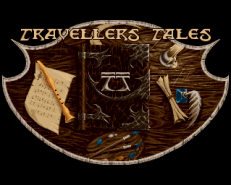
- On Mickey Mania: The Timeless Adventures of Mickey Mouse , the copyright stamp is at the top of the screen and the words " DEVELOPED BY " are at the bottom. A second later, one of the ghosts from the Mickey Mouse short, "Lonesome Ghosts" (who also play roles as enemies) appears and zaps the words " DEVELOPED BY ", which turns them into a grayish, stone crested version of the Traveller's Tales " TT " logo, with what would be Puggsy's ship wedged inside. The ghost then rolls up like a blind and disappears. The words " TRAVELLERS TALES " use the same font as the previous logo. On the SNES v ersion, the logo is already there and is sh ift ed to the right with the words, " DEVELOPED BY " next to it. Above it is the Skeleton enemy, who d rops down at first, then spi ns it 's head with it's foot causing i t to come off and fly away. A second later, it's body explodes into pieces.
- There's a still version in which the " TT " is golden and is inside of a border decorated with purple marble-like texture. Plus, " TRAVELLERS " and the " TT " are underlined and " TALES " is in spaced-out letters. " A " is above the logo, while " PRODUCTION " is below.
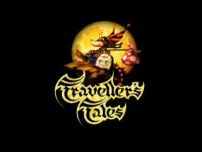
- There's a still artwork version of the logo that exists on a white background or a black background.
- There's a version with logo in isometric view floating in the water and swaying on it.
- There's the animated version of the water variant where the logo rises up from the water. The website URL appears below the logo.
- Starting in 2000, the studio's website URL: <a class="external" href=" http://www.t-tales.com/ " rel="nofollow" target="_blank">www.t-tales.com</a> was added below the logo.
- On Crash: Twinsanity , there is a different raccoon in place of the regular one on a white background. The cliff and raccoon move to the right to leave room for the Traveller's Tales text to fade, but spread out and having "O X F O R D S T U D I O" under it. Above it appears a silhouette of Oxford's skyline.
- On Crash Bandicoot: The Wrath of Cortex, the logo takes place on the opening space background, with the moon part of the background and the cliff floating past it.
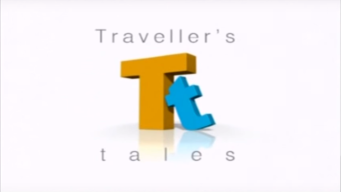
- On Nintendo DS games, the logo is still on black background. The name is replaced with "GAMES".
- On Transformers: The Game , the letters are forming from two cars.
- On a cartoon called What's Your News? , it is same as the DS variant, but with GAMES replaced by animation .
- At the end of the credits of console Lego games , the Lego men build the logo from blocks.
- On Lego Harry Potter: Years 1-4 for DS, the logo appears as a sketch on a piece of parchment.
- On the trailer for Lego Harry Potter , it is gray-blue and placed over the thundering background.
- On the Sonic Gems Collection port of Sonic R , the logo is still on a white background.
- The sounds of jumping letters and various squeaks.
- The sounds of running cars and metal conversion for Transformers variant.
- On the Lego variant, we hear the construction workers build. At the end, after the one worker pushes the lowercase "t", we hear a timpani roll. At the end of the roll, just faintly, a sound like Legos falling apart can be heard.
Navigation menu
10 Best Traveller's Tales Games, Ranked

Your changes have been saved
Email Is sent
Please verify your email address.
You’ve reached your account maximum for followed topics.
Open-World Games That Are Suitable For Children
10 best video games based on 00s movies, 14 best amiga games.
- Traveller's Tales has established itself as a prominent developer in the video game industry, with a strong focus on creating LEGO-themed games.
- The developer has received critical acclaim and fan delight for its various game releases, including those based on popular IPs like Disney, Crash Bandicoot, and Sonic the Hedgehog.
- Traveller's Tales has proven its ability to create successful movie tie-in games, such as Toy Story and The Chronicles of Narnia, while adding its unique gameplay mechanics to enhance the player experience.
With friends and collaborators in high places since its early existence, British developer Traveller's Tales has worked on IPs owned by heavyweight companies such as Sega and Disney. As impressive as this already is, the developer has carved out its niche in the video game market through its predominantly exclusive ability to develop and release games based on Lego.
Open-world games can offer thousands of hours of content, but most are for teenagers and adults. Which titles are suitable for children?
Despite this beneficial relationship, Traveller's Tales has developed various games, both Lego and non-Lego themed, that have hit the market to critical acclaim and fan delight. Whether it be working with a Disney IP, a gothic horror novel adaptation , or an entry in a staple gaming franchise like Crash Bandicoot , Traveller's Tales is a developer who has earned its place in the annals of video game history.
10 Crash: Twinsanity
Released in the awkward middle phase of the Crash Bandicoot series, which saw everyone's favorite orange marsupial in various states such as piloting a clunky mech suit and getting a sleeve tattoo, Crash: Twinsanity sees Crash and Cortex team up to battle interdimensional parrot villains the Evil Twins as they attempt to destroy their home.
While met with an arguably divisive critical response, Crash: Twinsanity has developed somewhat of a cult following due to its innovative gameplay mechanics, unique a cappella soundtrack, and quirky humor. This off-the-wall franchise entry also was the debut of character Nina Cortex, who has become a mainstay in the series since.
9 The Chronicles Of Narnia: The Lion, The Witch And The Wardrobe
Based on the commercially successful movie of the same name, The Chronicles of Narnia: The Lion, the Witch and the Wardrobe was released in 2005, allowing players to take control of the four Pevensie children as they assist Aslan in battling the forces of the White Witch.
There were some incredible blockbuster movies released in the 00s, but what about the video game adaptations that followed their release?
With a fairly basic action-adventure framework and a linear storyline that follows the movie, Traveller's Tales does add its flair in the form of a surprisingly varied and layered combat system that sees each child wielding special abilities and having unique combat interactions with one another.
8 Sonic 3D Blast
Developed in collaboration with Sonic Team, Sonic 3D Blast is an isometric platform game that sees the famous blue hedgehog battling Dr. Robotnik over the bird-like Flickies and collecting the Chaos Emeralds in a then-innovative 3D-rendered world. Released in 1996, the game was made as a swan song for the Sega Genesis console.
Considering the admittedly spotty critical and fan reception to games in the Sonic the Hedgehog franchise, Sonic 3D Blast garnered positive reviews when released. While retrospective reviews have become somewhat lukewarm, the game remains a unique entry in the Sonic the Hedgehog series.
7 Toy Story
With 1995's Toy Story video game, Traveller's Tales not only proved its penchant for creating widely successful movie tie-in games but also set the industry precedent of releasing said games in parallel with their relevant movie releases. Following the plot of the movie closely, players control toy sheriff Woody as he battles enemies with his signature whip.
Predominantly being a side-scrolling adventure game , Traveller's Tales does pepper in some curveball genres including first-person puzzler and racing to keep the gameplay experience varied. All in all, Toy Story was wildly successful and proved Traveller's Tales' skill in creating games that are simple yet engaging.
6 Lego Indiana Jones: The Original Adventures
It seemed that Traveller's Tales was not quite done with George Lucas IPs after the rampant success of its Lego Star Wars series of games as, in 2008, it released Lego Indiana Jones: The Original Adventures for a wide variety of platforms. Retelling the plots of the first three Indiana Jones films, fans were given Lego versions of all their favorite locations and characters, including a bonus unlockable Han Solo to add a tad of meta flavor.
Following the tried-and-tested Lego formula seen in Traveller's Tales' previous Lego games, Lego Indiana Jones: The Original Adventures did innovate in many ways, most interestingly in the addition of character phobias. With this, players are left asking the same question as hero Indiana Jones: why did it have to be snakes?
5 Lego Marvel Super Heroes
- LEGO Marvel Super Heroes
The first foray into the mashing of Lego and Marvel , Lego Marvel Super Heroes sees Traveller's Tales weave a brand-new plot centering on Earth's mightiest heroes stopping Dr. Doom from creating a superweapon all while Galactus descends on the planet with a bad case of the munchies.
With a whopping 180 characters in its roster, Lego Marvel Super Heroes is a fun-filled and expansive adventure for fans of all ages, whether they want to smash as the Hulk, streak through the skies as Iron Man, or even play as the grandad of Marvel himself Stan Lee. Being the best-selling Lego video game ever, this blisteringly successful game spawned various other games, including a spin-off title and a direct sequel.
4 Lego Star Wars 2: The Original Trilogy
Never underestimate the power of nostalgia. Or, at least, this is what Traveller's Tales would have fans believe considering the rampant success both commercially and critically for 2006's Lego Star Wars 2: The Original Trilogy . Covering the events of the first trilogy, this Lego video game packs lots of sci-fi goodness along with a massive helping of charm that has enamored fans and critics alike.
Accessing levels that cover scenarios from all three original movies from the hive of scum and villainy that is the Mos Eisley cantina, players are treated to a wide array of characters to choose from as well as Lego versions of iconic Star Wars locations. A critical darling to many, Lego Star Wars 2: The Original Trilogy perfectly mixes the wonder and fantasy of the Star Wars franchise with the quirky humor that has become synonymous with Lego games.
In an impressive move, Traveller's Tales wowed video game journalists with its very first game titled Leander , which was released in 1991. Controlling the eponymous knight, players are tasked with rescuing Princess Lucanna from an evil wizard who has kidnapped her as bait for King Arthur.
The Amiga had some charming gems during its lifetime. These titles were some of the best.
Upon release, Leander was praised for its graphical qualities and attention to detail, which were impressive in context to the time, as well as its smooth and sophisticated control scheme. Playable on both the Sega Genesis and the Amiga, this knightly adventure was reviewed positively on both platforms.
When his spaceship is stolen by natives of a strange planet, orange alien and protagonist Puggsy is forced to retrieve his only means of escape by navigating through various levels and biomes battling enemies, and solving physics-based puzzles. This is the set-up of Traveller's Tales' 1993 effort Puggsy and, according to the critical reception of the game, it caught the attention of many.
Predominantly hitting the player with generic platforming challenges, the twist comes with the game's unique physics system which gives weight and free movement to objects carried and stacked by the protagonist. With 57 levels, multiple boss encounters, and even secret levels and endings to discover, Puggsy captured praise for its sophisticated design and challenging gameplay.
1 Lego Star Wars: The Skywalker Saga
Lego star wars: the skywalker saga.
Spanning over four decades of cinema history, The Skywalker Saga concluded in 2019 with The Rise of Skywalker and, in 2022, the expansive video game Lego Star Wars: The Skywalker Saga was released. Featuring a plethora of classic planets and moons acting as hub worlds, open-world travel both on-planet and in the vastness of space, and an eye-watering 380 characters to choose from, it is no wonder that this game is considered a comprehensive must-have for any Star Wars fan.
With a detailed combat system that is a far cry from the button-mashing systems found in earlier Lego games and the ability for players to choose the chronology of how they experience each sub-trilogy, Lego Star Wars: The Skywalker Saga was praised extensively for its myriad of well-designed elements and is sure to delight fans for the whole of its extensive playtime.
MORE: LEGO Licensed Video Games Tier List
- Traveller's Tales
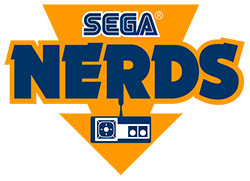
What is… PUGGSY: A retrospective of Traveller’s Tales hidden gem
We all remember Puggsy , right? Anybody? Okay then. Perhaps not everybody remembers Puggsy , but I certainly do.
In this article, I hope to educate keen retro SEGA Nerds such as yourself on one of the great titles of my childhood. I believe Puggsy is criminally under-appreciated and is often overlooked when it comes to notable SEGA Genesis/SEGA Mega CD games. Hopefully, this article will inspire people to pick up their pads and jump right into this quirky adventure across a bizarre alien world.
There are plenty of compelling game mechanics, some stunning visuals and a soundtrack that gives even Treasure a run for its money. It’s everything you need for an awesome trip back to 1993, and to make things that little bit sweeter, it’s cheap to a pick yourself up a copy online too!

Let us start with the people behind Puggsy. It was humble beginnings for Traveller’s Tales. Business was different for the company in 1993. There were far less staff as the studio was only into its second year of being part of the games industry. With only two titles behind them, Leander and Bram Stoker’s Dracula , the small crew of talented individuals set forth to create something new. Psygnosis , who like Traveller’s Tales was also a British company, clearly believed in the studio’s work. The studio had worked with publisher Psygnosis on both of its previous titles, and this was not to change any time soon.
Its next game was to feature a brand new mascot character. This was risky business in the early ’90s. Everybody and their grandma was working on a mascot game, all striving to be the next Super Mario or Sonic the Hedgehog. Due to the amount of company mascot character games on the market, competition was fierce and getting noticed was not an easy task. Successful video game characters had to be visually appealing to children, having some iconic features that would allow them to stand out from the legions of others.
Unfortunately, Puggsy himself did not have much going for him. Not only did he resemble a tremendously out-of-date 1970’s space hopper , he also had stumpy little arms and legs along with a enormous nose. Still, Puggsy is an alien after all. While he may not have the cool attitude of a certain blue hedgehog or the jumping skills of a particular plumber, he makes up for it with his smarts.
Let’s take a look at the story. While it’s nothing ground breaking, it serves its purpose, fits the game well and serves for some humorous mini cutscenes between worlds. Puggsy is flying through space on a journey back to his home world, which is to take him 15 light years for anybody who might be counting. Suddenly, disaster strikes! Much to his dismay, he is ambushed by a band of villainous space pirates on his way through an asteroid field. After the enemies laser fire makes a direct hit on Puggy’s spacecraft, our hero has no other option than to crash land on a nearby planet.

After jumping ashore and looking for supplies, it isn’t long before good ol’ Puggs attracts the attention of the planet’s inhabitants. A mischievous tribe of raccoons have their eye on his ship, and before you know it, they’re hauling it back to their chief by carrying it above their shoulders in a comical fashion. Puggsy must now use whatever he can find to take his ship back from the pesky raccoons. To make matters worse, he’s also somehow managed to anger the world guardians, all of which challenge him to battle at the end of each world. Somebody give this guy a break!
Okay, I hear you asking, “It’s yet another mascot character title, and there are hundreds of them. What makes this one stand out from the rest?” Thankfully, many things.

Puggsy has a sort of mock physics engine, a rarity in two-dimensional platformers of the time. Players take control of our alien friend and are able to pick up objects found scattered throughout each stage. This was dubbed TOI (total object interaction), and it’s an impressive feature. The goal is simple: navigate through each stage making use of the items found in each to solve puzzles. It starts off simple: pick up a seashell, use it to flick a switch, unlock a gate and go through the exit. Don’t be fooled, though. It soon becomes difficult, with players having to rack their brains if they wish to escape each stage.
Some of the later stages involve using the items in very cool ways. For example, the Darkskull Castle world has a stage that is incredibly dark. Players must shine a torch around the environment to find hidden letters. The letters must then be assembled into a word and said word is then used to unlock the exit. Another stage, part of a section in Badger Mill, has players baking bread. By placing flour on a conveyor belt and processing it through a machine, Puggsy is able to use the loaf to gain access the final room and escape the mill. Be careful not to make any mistakes though, otherwise the bread will be burnt to ash and Puggsy’s hopes of freedom will be dashed.

A level in Redwood Keep has players making use of spy cameras, which allow them to follow a bouncing ball around the environment. By using the camera along with a series of switches, it’s possible to control the ball through otherwise inaccessible areas, triggering switches to eventually break down the castle door.
There are many varied locations, with two or three stages found in each. The small amount of stages per location helps to mix the visuals up a bit. Nothing ever feels over-done or tedious, which is something I really appreciate, especially considering it’s part of the puzzle platforming genre.
There is a constant sense of wonder with every new stage. What purpose does each item serve? What properties do they have? What happens if I throw it at a wall, will it break, will it bounce? It’s all very clever, and it never stops being entertaining.

Believe it or not, our little orange friend had an unreleased title. It even pre-dated Puggsy on the Genesis. In fact, the character was not even a creation of Traveller’s Tales, and it wasn’t until they first bought the license that they developed Puggsy.
The video you can see above is part of a pitch video for an Amiga title. Named Puggs in Space , this demo may not look like much today, but it boasted impressive animation and sound for the hardware it is running on.

Puggs in Space was to be an exploration adventure title, with players taking control of our hero and navigating around a strange alien world. The concept is very similar to that of the later released Puggsy, and it was no doubt that this demo was used as a basis to work from. Despite drumming up quite a lot of interest amongst Amiga and retro gaming enthusiasts in recent years, at the time, the game was never really able to get off the ground. Unfortunately, Puggs in Space ended up serving nothing more than being a conceptual video to help sell the IP.
Despite this, the short demo did help launch the careers of the development staff behind it. Ian Hetherington , the then director of Psygnosis, had a large part in all of this. After seeing the demo at a London Computer Fair, it’s said that he was so impressed, he decided to sign all three members of the team up to Psygnosis on the spot; I can only imagine how exciting that must have been for those behind the demo.

Speaking of which, let’s take a quick look at each member of the team. Alan McCarthy is the first of these three individuals, and he went on to work for companies such as Millennium Interactive, Electronic Arts and ultimately, Sony. He’s credited as a programmer in the Amiga title The Adventures of Robin Hood, and he’s worked on popular Sony franchises such as MediEvil and LittleBigPlanet. Lee Carus , the sole artist on the project remained at Psygnosis for a good while. It was there he found himself working on projects such as Shadow of the Beast and Colony Wars. He remained working at the company once they became SCE Studio Liverpool and continued as a graphics artist on titles such as WipEout and Killzone. Since then, he’s co-founded his own studio along with Graeme Ankers, named Firesprite Games. They developed the recent title The Playroom for the PS4.
Finally, we have Tim Wright , who composed both the music and sound effects for the demo, and this was his break into the industry. Puggs in Space served as the first video game Wright was to compose for and he has worked on more than 70 titles since. Some notable ones include Lemmings, Shadow of the Beast and WipEout . Wright released an update of the original Puggs in Space music back in 2007, likely as a side project. It’s a lot of fun to hear what the game would sound like if released today, and it is a nice tribute to the demo that helped launch his career.

Now, let’s take a look at the game itself. There are three different versions of Puggsy available, two of which are ports of the original. The first was released in 1993 for the 16-bit home console, the SEGA Genesis.

This was the original and perhaps the best version. Detailed visuals and a distinctive soundtrack by video game composer Matt Furniss helped create a wonderful looking and sounding world for Puggsy to play around in. It has a very similar feeling to another Genesis title, Wiz ‘N Liz. It will come to no surprise that despite being developed by a different studio, the publisher for both games was Psygnosis and quite a few of the staff from the Wiz ‘N Liz team helped out with Puggsy. In fact, you will notice cameos of characters from Wiz ‘N Liz in Puggsy and vice versa. We won’t tell you what exactly, as you should definitely play both titles and find out for yourselves!
As mentioned before, the gameplay of Puggsy involves picking up objects and using them to solve puzzles. The controls are simple; one button allows for Puggsy to jump, another for him to pick up/drop and object and the third to perform an action with said object. The actions performed vary greatly. Along their travels, players will pick up items, such as guns and water pistols which can be fired with this interaction button. In addition to this, mugs of booze can be thrown at enemies, balloons can be filled with air, matches can be lit and much more, all achieved with a press of this button.
Our little orange hero is not totally defenceless, as players are also able to jump on top of enemies heads. There’s a trick to it though, one I did not realise until years later. While in the jumping animation, players must hold down on the D-pad to successfully stomp foes. It is a bit of a pain, as holding directional down while jumping can restrict movement and makes it an impossible tactic in some situations. Oddly though, it fits well with the style of game Puggsy is, and it encourages players to use items and their cunning to defeat the bad guys instead.

Puggsy is also able to give himself an extra hit, too. By donning a pair of handsome shades, an extra hit is given, meaning it will take two attacks to knock Puggsy off his feet. Speaking of his feet, he’s also able to locate and wear some pretty snazzy sneakers. These are a crucial power up as they not only give our hero another extra hit, but allow players to move more quickly. They are essential for navigating the larger stages, so it’s a godsend that there are plenty scattered around. It’s possible to use the empty shoe box as an object too, allowing you to stack them on top of one another and reach great heights!
In-between the stages, players navigate across a world map. Each stage is represented by a small yellow square, which later turns to white once beaten. Hidden stages can show up as all different types of colours, making them feel that little bit more special. There are a total of five boss battles found in the Genesis version of the game. All of the bosses tower above Puggsy, and players will have to make use of objects in the environment to defeat them. My favourite is no doubt the first boss, a peg-leg’d pirate parrot of whom you fight atop a rocking pirate ship on a stormy ocean.

Unlike certain other SEGA Genesis games, Puggsy did not feature a save system. Instead, a tedious password system was put in place that required lengthy codes of 27 characters. What’s interesting to note is the game could have easily featured a save system. Instead, the developer opted to use the SRAM space for copy protection. If you are playing a pirated ROM of the game on an emulator, players are locked out after the first boss is defeated and the game gives you a stern talking to.
If you are to play Puggsy , we would strongly recommend the SEGA Genesis version above the rest. While it doesn’t have any extra content, the music sounds much better coming from the SEGA Genesis then it does the from CD or Amiga, and it makes a huge difference. The three button controls are straight-forward, and while the password system may feel tedious, we’re just happy there is one in place considering the size of the game and the complexity of the later puzzles.

Puggsy on the SEGA Mega CD released shortly after the SEGA Genesis version, also in 1993. The game features largely the same content, although it includes an extra few stages, boss battles and CD quality sound.
Boss battles have increased by three, with a giant crab, a rat in shining armour and a huge mechanical raccoon head added to the roster. All three of the bosses are a nice addition, although they are pathetically easy to beat.

The mechanical raccoon boss makes excellent use of the SEGA CD’s additional processing power, featuring FMV quality visuals for the boss itself. Puggsy stands atop of a beam overlaying the FMV as the robot spouts bursts of fire up towards him. This boss is no doubt the easiest of the trio, as no direct attacks need to be made against him. Simply survive for a minute or so until the water below rises enough to engulf the robot and you’re golden. It’s a little disappointing a foe with such potential can be beaten so easily, although there was only so much that was achievable when using an FMV for a boss fight.
While we’re on the subject of FMVs, this version of the game also includes video cutscenes including an extended intro sequence. They are extremely basic, and due to this, lose a lot of the comedic value and charm of the ones included in the original SEGA Genesis version. The technology may be more impressive, but we would take simpler but nicer looking in-game cutscenes over FMV sequences any day.

Then we have the music. Puggsy on the SEGA CD boasts impressive sound quality, however every track leaves something to be desired. The SEGA Genesis instruments sound far better fitting and memorable tracks such as the eerie Darkskull Castle sound superior on the older hardware. Furthermore, a lot of the tracks for later levels are missing. This isn’t the case in the original version, with stages such as Fire Heart having their own unique music. The SEGA CD version of this world replays the beach music from the first stage. Boo, hiss.
If you are able to pick up a copy for the SEGA CD, then we would still definitely recommend it. However, given the choice, we would suggest playing the SEGA Genesis version for the superior soundtrack. We’re also a little disappointed this version did not include a save system either. Had it included one of these systems, then this may well have been the version to recommend.

The Amiga version of Puggsy released a year later in 1994, and it is not half bad. The visuals, gameplay and music are all pretty faithful to the original, and while it isn’t on par with the SEGA Genesis version, we would still recommend giving it a shot.

One of the major differences between the Amiga version and the original is of course, the graphics. While the sprites and foreground environments look more or less identical to that on the SEGA Genesis, the background graphics are instead replaced with simple colour gradients. It doesn’t detract too much from the gameplay however, which thankfully is all still intact. Even the map screen makes its reappearence here, and we’re less welcoming of the password system, which also makes its terrifying comeback.
Stages are identical to those in other versions, with the TOI system allowing for all of the tricky puzzles to return and baffle the Amiga crowd. The mock-physics engine works well on the Amiga, which once again was a rare sight to see on the system, even in 1994. The bosses look great too, with large moving sprites flying around the screen and even some fancy reflective water effects used during certain moments. Cutscene animations are no longer animated, though. Instead they are now replaced with static images, but it isn’t much of an issue.

One aspect worth mentioning is the game’s performance. Users report that when running this game on the Amiga A500 , slowdown can occur quite frequently. This isn’t an issue that occurs in either the SEGA Genesis or CD versions and as such we would recommend only playing this title on higher end Amiga computers.
If you have an Amiga and fancy a taste of Puggsy , we would suggest picking this version up. As with the SEGA CD version though, given the choice, we would stick to the SEGA Genesis original.

It’s a huge shame that this game often goes unnoticed. What is to blame for this? Probably a combination of many things.
Puggsy is certainly a weird and strange looking title, which is something that will not appeal to everybody. The character himself certainly isn’t visually appealing enough to be successfully marketable, and he just did not stand a chance when sat aside the iconic face of say, SEGA’s Sonic or Nintendo’s Super Mario. 1993 was also an unlucky year for smaller companies with new IPs as many huge game releases were hitting the market, such as StarFox, Sonic CD, Secret of Mana, Link’s Awakening, Mortal Kombat II and Day of the Tentacle, to name a few.
Still, we love the little fellow. Traveller’s Tales continued working with both Psygnosis and SEGA on several more titles. They developed 16-bit games for big name franchises such as Toy Story, Mickey Mouse and even Sonic the Hedgehog, bringing all new experiences to the SEGA Genesis and Mega CD .
There is something about Puggsy that makes it feel so unique, atmospheric and ultimately astounding. It not only remains today as one of my favourite titles on the SEGA Genesis, but also as one of my favourite video games of all time.

If you watched the video in the section above, you will have noticed some intriguing text during the credits:
Look out for Puggsy Part II coming soon!
Cool, right? Wrong . Part two never happened. Puggsy’s existence ceased to be after the first game, and it is mighty unfortunate. The developers behind it had moved onto bigger and better things, working with SEGA on various big name titles. It’s likely Jon Burton and Traveller’s Tales still hold the license to Puggsy , although it looks like he won’t be returning any time soon.

Lee Sparkes
Related articles.

Retro Review: Sonic 3D


Brickipedia
Join the official Brickipedia Discord server! A great place to chat with fellow LEGO fans!

Traveller's Tales
Traveller's Tales is a division of its parent company, TT Games . It is responsible for the creation of many LEGO video games. They have created the main versions of most LEGO games 2005 onwards, while the portable versions being created by other third party companies and TT Fusion at the present time. Traveller's Tales was re-established into the TT games group and now is owned by Warner Bros. Interactive.
Traveller's Tales was founded in 1989 by Jon Burton and Andy Ingram. Initially a small company focused on its own content, it grew in profile through developing games with larger companies such as Sega and Disney Interactive Studios. Their Notable works prior to their Lego Games Included Sonic R, Sonic 3D Blast, Puggsy, Mickey Mania, Rascal, And Crash Bandicoot: The Wrath of Cortex.
Traveller's Tales is well known for their LEGO video games. Traveller's Tales holds the worldwide rights to develop LEGO video games. So far they have produced nine LEGO video games and all of them have been successful up to date, the least grossing being LEGO Star Wars: The Complete Saga . Traveller's Tales is the only LEGO video game developer to release so many LEGO video games on almost all the current consoles in the market.
LEGO video games released by Traveller's Tales
- LEGO Star Wars: The Video Game
- BIONICLE Heroes
- LEGO Star Wars II: The Original Trilogy
- LEGO Star Wars: The Complete Saga
- LEGO Indiana Jones: The Original Adventures
- LEGO Batman: The Video Game
- LEGO Indiana Jones 2: The Adventure Continues
- LEGO Battles: Ninjago
- LEGO Harry Potter: Years 1-4
- LEGO Star Wars III: The Clone Wars
- LEGO Pirates of the Caribbean: The Video Game
- LEGO Harry Potter: Years 5-7
- LEGO Batman 2: DC Super Heroes
- LEGO The Lord of the Rings: The Video Game
- LEGO City Undercover
- LEGO City Undercover: The Chase Begins
- LEGO Marvel Super Heroes: The Video Game
- LEGO Legends of Chima: Laval's Journey
- The LEGO Movie Videogame
- LEGO Ninjago: Nindroids
- LEGO The Hobbit: The Video Game
- LEGO Batman 3: Beyond Gotham
- LEGO Ninjago: Shadow of Ronin
- LEGO Jurassic World
- LEGO Dimensions
- LEGO Marvel's Avengers
- LEGO Star Wars: The Force Awakens
- LEGO Worlds
- The LEGO Ninjago Movie Video Game
- LEGO Marvel Super Heroes 2
- LEGO The Incredibles
- LEGO DC Super-Villains
- The LEGO Movie 2 Videogame
- LEGO Star Wars: The Skywalker Saga
- 1 Darth Dev
- 2 List of themes
- 3 Minifigures (theme)
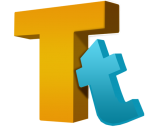
OUR GAME CATALOGUE
Since the creation of Traveller’s Tales in 1989, and through to TT Games Studios as part of the Warner Bros. Interactive Entertainment family, we have been driven to make quality family-friendly titles that everyone can enjoy. From popular IP hits including Marvel, Batman and Harry Potter to the platformers and racers of yesteryear. Take a journey through our rich back-catalogue below and let us know how many you’ve played.
- LEGO titles
- Non-LEGO titles
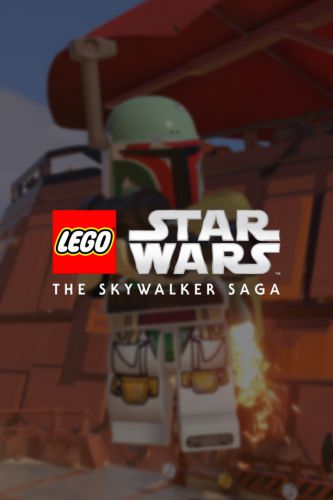
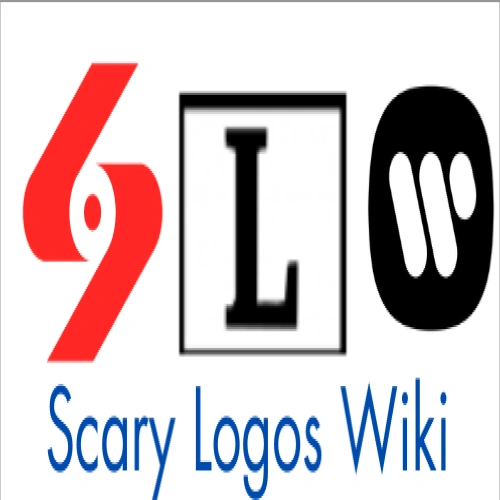
Travellers Tales
- 1.1 Variants
- 1.2 Variants
- 1.3 Variants
- 2 Music/Sounds
- 3 Scare Factor
1st logo (1991): On a black background, we see a brown desk outlined in the shape of a shield that is containing sheet music, an old flute, a candle wax, a bottle of ink and its tip, a scroll, a paint set, and an old journal having the Traveller's Tales symbol (which shows two "T"s facing each outer) on it. Tthe words "TRAVELLERS TALES" is above on the shield.
2nd logo (1993-1995): Over a black background, we see two dark blue, stylized "T's" spinning and slowly zooming away from us. Suddenly, a meteor appears in the background and flies straight at the screen and blows up, thus turning the screen orange. The orange screen fades out and the "T's" are in flames, with "Travellers" at the top and "Tales" at the bottom.
Variants [ ]
- On Mickey Mania: The Timeless Adventures of Mickey Mouse, the copyright stamp is at the top of the screen and the words "DEVELOPED BY" are at the bottom. A second later, one of the ghosts from the Mickey Mouse short, "Lonesome Ghosts" (who also play roles as enemies) appears and zaps the words "DEVELOPED BY", which turns them into a grayish, stone crested version of the Traveller's Tales "TT" logo, with what would be Puggsy's ship wedged inside. The ghost then rolls up like a blind and disappears. The words "TRAVELLERS TALES" use the same font as the previous logo. On the SNES version, the logo is already there and is shifted to the right with the words, "DEVELOPED BY" next to it. Above it is the Skeleton enemy, who drops down at first, then spins it's head with it's foot causing it to come off and fly away. A second later, it's body explodes into pieces.
- There's a still version in which the "TT" is golden and is inside of a border decorated with purple marble-like texture. Plus, "TRAVELLERS" and the "TT" are underlined and "TALES" is in spaced-out letters. "A" is above the logo, while "PRODUCTION" is below.
3rd logo (1994-2006): On a black background, we see a CGI raccoon lying on an edge of a cliff resting on the tip of the edge holding a red handkerchief with white polka-dots and his other hand is on the gravestone with a left arrow and the initials, "TT" on it. The raccoon nods his head while the logo rotates. A yellow-orange moon appears rising behind him and the cliff. The words: "Traveller's Tales" are in a Medieval style font with the yellow outline, later fade in.
- There's a still artwork version of the logo that exists on a white background or a black background.
- There's a version with logo in isometric view floating in the water and swaying on it.
- There's the animated version of the water variant where the logo rises up from the water. The website URL appears below the logo.
- Starting in 2000, the studio's website URL: www.t-tales.com was added below the logo.
- On Crash: Twinsanity, there is a different raccoon in place of the regular one on a white background. The cliff and raccoon move to the right to leave room for the Traveller's Tales text to fade, but spread out and having "O X F O R D S T U D I O" under it. Above it appears a silhouette of Oxford's skyline.
4th logo (2005-): An orange "T" letter stands on a place, turning around. The blue lowercase "t" jumps into the screen and comes near to the big "T", leaning on it. The big "T" taps the small letters on the "head". The words "Traveller's" and "tales" appear above and below, respectively, in thin black font.
- On Nintendo DS games, the logo is still on black background. The name is replaced with "GAMES".
- On Transformers: The Game, the letters are forming from two cars.
- On a cartoon called What's Your News? , it is same as the DS variant, but with GAMES replaced by animation .
- At the end of the credits of console Lego games, the Lego men build the logo from blocks.
- On Lego Harry Potter: Years 1-4 for DS, the logo appears as a sketch on a piece of parchment.
- On the trailer for Lego Harry Potter, it is gray-blue and placed over the thundering background.
- On the Sonic Gems Collection port of Sonic R, the logo is still on a white background.
Music/Sounds [ ]
1st logo (1991): The opening theme of the game.
2nd logo (1993-1995): We hear a loud "BANG" sound when the meteor explodes, followed by the sound of fire. The Mickey Mania variant had a 16-bit sparkling noise when the ghost appears and a 16-bit warping noise when it disappears. The SNES version has the exploding effect when the Skeleton explodes into pieces; both sound effects were also used in the game. The still version has silence or the opening theme of the game.
3rd logo (1994-2006): The normal standard version and the Oxford version has a camp-like theme. The water variant has sounds of the ocean with waves crashing. The still variant has silence or the opening theme of the game.
4th logo (2005-):
- The sounds of jumping letters and various squeaks.
- The sounds of running cars and metal conversion for Transformers variant.
- On the Lego variant, we hear the construction workers build. At the end, after the one worker pushes the lowercase "t", we hear a timpani roll. At the end of the roll, just faintly, a sound like Legos falling apart can be heard.
Why the founder of Traveller's Tales released a director's cut of an old Sonic game 25 years later
Blast from the past.
By any conventional definition, Jon Burton has lived at least three careers: first, a multi-hyphenate founder-programmer-director at Traveller's Tales, best known as the scrappy studio behind a wide variety of licensed movie-games; second, a producer and director of films, primarily in the inescapable Lego mondo-franchise; and, now, a burgeoning YouTuber with nearly a hundred-thousand subscribers to his channel, Gamehut. And while it might seem like a wild leap to some, to hear Burton tell it, it's a natural outgrowth of his existing hobbies, which now includes remastering his old games.
"I was one of the first wave of people making video games, and I'm getting older, and I want to fiddle with stuff," he says. "At first, I just wanted to document all my old games, since all this physical media is going to be lost to time. I wanted to look back on the programming choices I made, and maybe exhibit some prototypes. I didn't do any promotion of the channel or anything. It was for my own entertainment, which is one of the best reasons to do things, if you ask me."
During the early days of Traveller's Tales - or "TT," as he refers to it - Burton was the studio's sole programmer, a role that he relished far more than his mundane managerial duties. After some early titles, TT worked with Sony on a string of licensed Disney games in the mid-to-late '90s, starting with Toy Story, one of the first to launch alongside its parent film - usually, the game would come six to nine months later. When the side-scrolling platformer racked up millions of sales - despite its now-infamous difficulty curve - TT discovered that timing was indeed everything. "We had found our business model, and people started to emulate it," recalls Burton. "For the next 10 years, we were on seven-month deadlines."

During that decade of flitting from half-year endeavor to half-year endeavor, Burton got a life-altering opportunity: Sega approached TT to make a Sonic game, which would eventually become the divisive Sonic 3D Blast. "That got our attention," Burton says. "It might be hard to believe now, but Sonic was the biggest thing in the world back then." Sega had already drawn up the design scheme for an isometric 3D game based around collecting colourful birds (eventually dubbed "Flickies" in an homage to earlier Sega games) to enter checkpoints, but since no-one had tried to make a platformer of that style on the aging Mega Drive, it lacked the manpower to construct the technology themselves. As Burton recalls, it was exactly the sort of technical challenge he thrives on. "I love making a machine do something you haven't seen it do," he says. "We made it the way they wanted from scratch, and I'm very proud of that."
During those frantic months, Burton tried to impress a Sega producer named Kats Sato with the Lotus Turbo Espirit sports car he drove at the time, to disastrous results. "Just before his hotel I thought I'd slow down to show him how fast the car accelerated. So I slowed to a crawl and noticed another car coming up behind us, so I thought I'd better take my chance to show off. So I accelerated away as quickly as I could and then slowed back down and pulled into the hotel car park. However, the car that had been coming up behind me just happened to be a police car.
"They thought I'd stolen the car and, having spotted them, was trying to make my escape. So I was chased into the hotel car park by sirens and blue flashing lights. Soon afterwards two more police cars joined the scene. So you have three police cars surrounding a very sheepish me, a very startled Kats, and the rest of SEGA's team staring out of the hotel windows at the commotion. Luckily for me, once I'd proved it was my car, they let me go with a warning. But still, pretty embarrassing in front of SEGA, even though a fairly fitting incident considering the selling point of Sonic games is speed."

As TT expanded its business, Burton was forced to pass the programming reins onto his employees, relegating himself to a more traditional "creative director" role. But now he's taken a step back from the games industry, Burton has begun to re-evaluate his decades-old portfolio from a new perspective. And though he stands by every one of the games TT developed over the years - yes, even A Bug's Life - he admits 3D Blast could use some tweaks. "I look at a lot of modern reviews, and there's a lot of obvious critiques of certain elements, like how you take damage when you're wearing the speed shoes, or the lack of incentive to get the medals. So I thought: why don't I just fix some of these things?"
Thus he began yet another career of sorts - Jon Burton, part-time mod-maker. At first, Burton tried to use a Game Genie to implement some of his most basic changes to the code, with limited success. Eventually, he realised he could just make a de facto "ROM hack" for the game and call it a free director's cut patch, for those who own the original cartridge. He unearthed old assets, created a wishlist of features he crowd-sourced from the community, and got to work. Unlike many ROM hacks, though, Burton deliberately boxed himself within the limits of the Mega Drive hardware itself, which made the process much more complicated than simply dropping new sprites into the existing code.

"It's like riding a bike," Burton explains. "I have to fit it into a 4-meg cart. Adding in Super Sonic was nine new sprites. Well, you only have 80 sprites to begin with. Adding in the score and time limit - both elements of other Sonic games - made the screen a little too busy, so I had to write special code to slide it on and off depending on what's going on. People ask me, 'can you add in the Saturn music?', and I say, 'well, do you understand the fundamental difference between how the Mega Drive and Saturn make music?' It's not easily interchangeable. Sonic Mania might look like a retro game, but there's no way the Mega Drive could have handled it. It's the same thing.
"I have people sending me beautiful Super Sonic transformation animations, really top-notch stuff, and I try to explain to them that I don't have the tools to compress the data anymore. Well, some people say they have converters that can do it, but I'm not sure. I'm not even sure I have the cartridge space, anyway. You see? It goes on and on. You can fiddle around forever."
Throughout our conversation, Burton always refers to his pet project as the "director's cut," and never one of the usual gaming terms for such a project, such as "remaster". To Burton, this distinction is incredibly important. After all, film auteurs alter their "finished" work all the time, and it usually sticks in the mind of the audience: hardly anyone watches the mangled theatrical cut of Blade Runner these days, for example. Still, these efforts are usually blessed by the studio that birthed them. In a field as young as gaming, the stark lines between developer and publisher become a bit muddier as the years go by. As the founder of the company that made 3D Blast, Burton knows he owns the code he's mucking with for a bit of fun. With other games, however, the equation isn't so simple. "As game developers get older, these issues are going to come up more and more," Burton says. "I don't think there's anything in my past that anybody is gonna really clamour to see. But I think a lot of developers do, and if they've left those companies, can they legally do it? I think there's a negotiation that has to take place there."

For now, with the director's cut finally released (the final version is now available on Steam Workshop, and as a downloadable patch file if you already own the original Mega Drive game), Burton plans to return to his YouTubing ways in his off-time, uploading prototypes and coding tricks he devised decades ago. Even now, months into it, he's still bewildered by their popularity.
"I thought nobody would watch it. Nobody would care about how a sound-chip works, or how I did some effect in a 25-year-old game. And they get hundreds of thousands of views. Me, waffling on about old technology in a bad British accent. It's a selfish endeavor. But if people enjoy it, that's all the better."
Read this next
- Sonic 3D's original developer is creating an unofficial Director's Cut
- How one Mega Drive dev cheekily slipped through Sega's certification process
- SEGA to follow Nintendo's Mario model
Travellers' Aid Society
Traveller's Tales Vol. 1
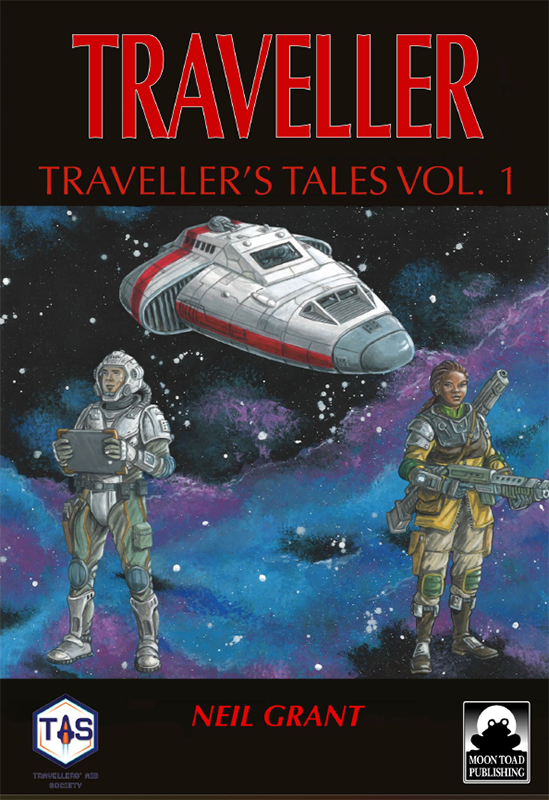
See all titles
Publisher website
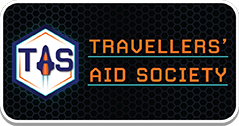
Follow your favorite publishers and categories to receive a weekly email of new releases
For Traveller
neil grant.
( 3 Reviews / 4 Ratings )
Rule System
Added to Catalog
description
Traveller’s Tales features 300 short fiction pieces collecting slices of life from the universe of the Traveller role-playing game. Whether you are looking for exciting ground and space combat, unusual worlds and societies or even insight into alien psychology, there’s something for you inside these covers.
Each of the vignettes comes with gaming notes, full of ideas for using the vignette as an NPC, Patron, plot seed or location that could be incorporated into your own games with minimal effort.
All can be used with any edition of Traveller, or indeed with any science fiction role-playing game, or simply enjoyed as fiction in their own right.

The Book of Small Craft
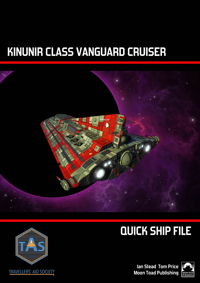
Quick Ship File: Kinunir Class Vanguard Cruiser

Hiver Explorer Type HX
- Reviews (3)
- Discussions
Customer Rating's Breakdown
4.5 out of 5 for 4 ratings
Loading Reviews
Loading Discussions
Customers also Bought
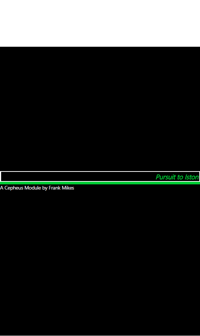
Pursuit to Iston
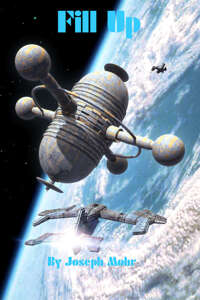
A Table of Tense Tropical Encounters 100 Ideas

The Cepheus Engine Sociocultural Generator
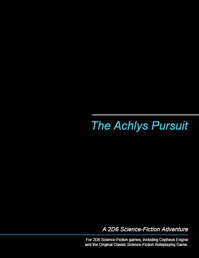
The Achlys Pursuit
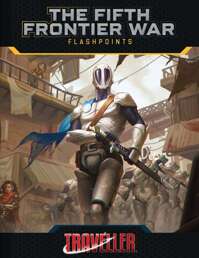
Flashpoints

Cepheus Engine Character Dossier Pages
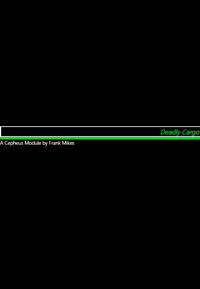
Deadly Cargo

Disney Adventure cruise with Disney, Pixar, and Marvel themes to set sail from Singapore in 2025
Up for a fun holiday at sea?
Any Disney fan would be delighted to experience its attractions—be it their theme parks or cruise ships. If you’re looking to try the latter on your next family vacation, you might want to consider going onboard the new Disney Adventure cruise ship that will set sail from Singapore in 2025.
On the latest addition to its fleet, Disney marries thrill with the magic of its stories in films and park sites that have been loved by kids and kids at heart through the years.
With a gross tonnage of 208,000, the first Disney Cruise Line ship to homeport in Asia has an estimated passenger capacity of 6,700 with around 2,500 crew members. It’s ideal for those who are up for a days-long wander as it will sail three- and four-night cruises from the Marina Bay Cruise Center.
Curious about the Disney Adventure? PhilSTAR L!fe got to know more about it during Disney Cruise Line Singapore's virtual media update. Here's what you can expect from the new ship.
7 themed areas inspired by Disney, Pixar, and Marvel movies
Just like its many offerings, the Disney Adventure promises an immersive experience the moment you set foot on it. As the company put it, it will be “both a journey and a destination” with its seven uniquely themed spots.
There’s the Disney Imagination Garden, which features a nice valley and garden along with an open-air performance venue. Its design is inspired by a century of Disney adventures, from Moana all the way to Mowgli and beyond.
The Disney Discovery Reef is a place for dining and shopping with friends at sea, including characters from The Little Mermaid , Lilo & Stitch , Finding Nemo , and Luca, while the San Fransokyo Street is a street market with interactive games, shops, and cinemas amped up with designs taking inspiration from Big Hero 6 .
You can also chill at Wayfinder Bay—“the line where the sky meets the sea.” It’s a spacious open-air spot with a Moana-inspired pool area, giving you a stunning look at the sea and the sky during your cruise.
Love Disney’s prince-princess rom-coms? Get lost at Town Square, which is all about Disney royals such as fan favorites in Tangled, Cinderella , Frozen , Snow White and the Seven Dwarfs , and The Princess and the Frog, among others.
If you’re in the mood for some thrill, there's no need to get off the ship as the Disney Adventure offers new and exciting activities at Marvel Landing, which has Avengers -level activities with none other than much-loved superheroes, and Toy Story Place, a playground with themed food spots and water play areas inspired by Toy Story films.
World-class entertainment
The Disney fun will extend from its attractions to the new cruise ship, giving you the ultimate entertainment experience. Since it’s built with families in mind, it will have something in store for Disney fans of all ages—there are dedicated areas for the young, the tweens and teens, and even adults, including premium restaurants as well as lounge and spa.
Apart from character encounters, there will also be stage shows featuring Disney songs and characters, signature events, first-run films, game shows, and karaoke parties.
You can also look forward to having mouthwatering dishes at its restaurants that go beyond simply eating food with your companions. It will have buffets, quick bite spots, and more, with each of them giving you a chance to relive precious Disney tales through incredible themes from their interiors to their food. Disney will also accommodate special dietary requests, if any.
Relaxing staterooms
Of course, rest is essential in any voyage so you can have the energy to explore more of its attractions the next day. The Disney Adventure will have Disney-themed rooms as well as its signature split-bath concept, which is designed to allow two passengers to prepare for the day or chill in the middle of it at the same time.
Aside from relaxation, the new Disney Adventure puts passengers' convenience at the top of its priorities, offering concierge accommodations with personalized service—from access to exclusive areas and amenities like a private lounge, sundeck with pool and whirlpools, high-end shopping venues, as well as spa and fitness facilities.
Know more about the Disney Adventure here .
This article Disney Adventure cruise with Disney, Pixar, and Marvel themes to set sail from Singapore in 2025 was originally published in PhilSTAR L!fe

Every Southern California theme park ride, ranked
- Copy Link URL Copied!
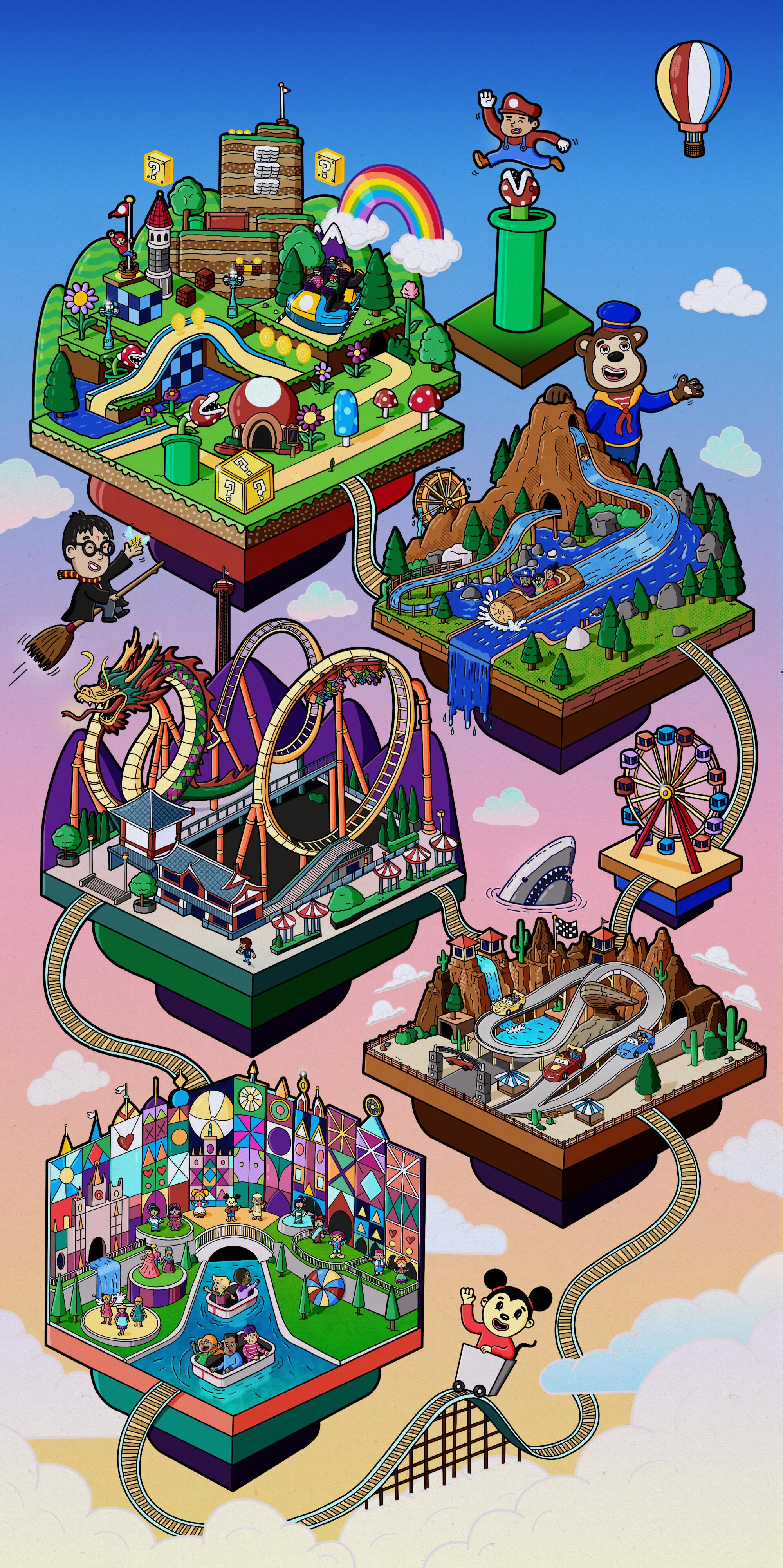
Times theme park critic Todd Martens was handed a wild assignment: Rank every theme park ride in Southern California. The mission was dizzying, literally, as he spent months fastening his seatbelt and zipping through mountains, strapping on AR goggles and floating into fairy tales. He judged each attraction not just on sheer entertainment, but on artistry and historical significance.
Here are the results. Below you’ll find guides to Disneyland, Universal Studios, Knott’s Berry Farm and Magic Mountain, with their rides ranked from best to worst. Use them to plan a trip to the park — or to start a debate. What would be your No. 1?
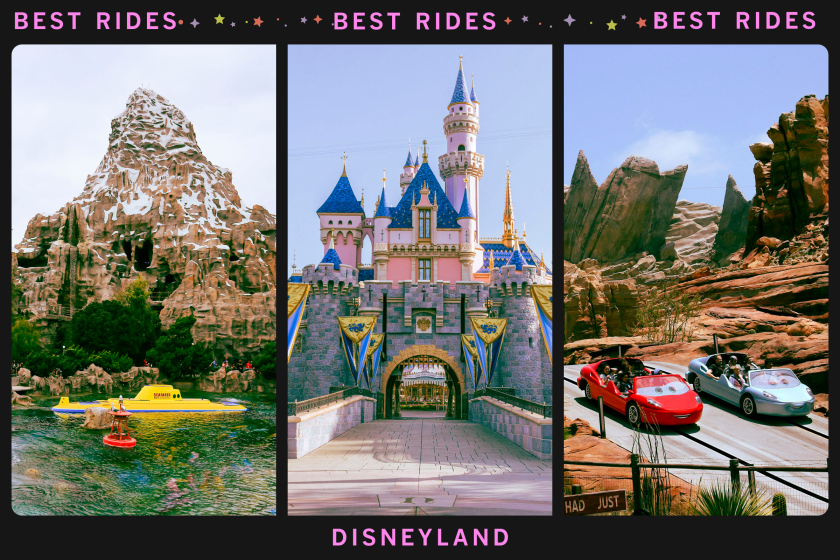
Every ride at Disneyland, ranked
Our top choice may be controversial. You’re welcome to disagree — politely. We’re talking about the Happiest Place on Earth, after all.
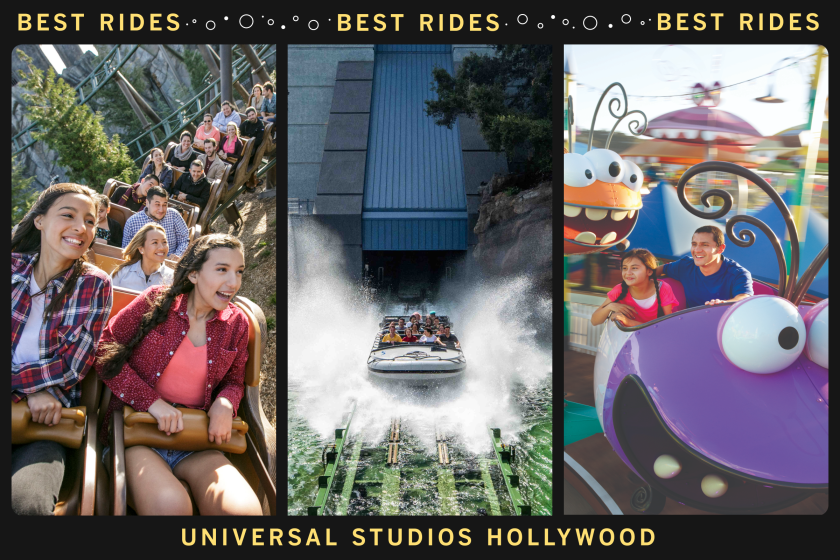
Every ride at Universal Studios Hollywood, ranked
This is a theme park set in a working movie studio. While that means space is at a premium, it creates a lively, “only in SoCal” energy that no other theme park can match.
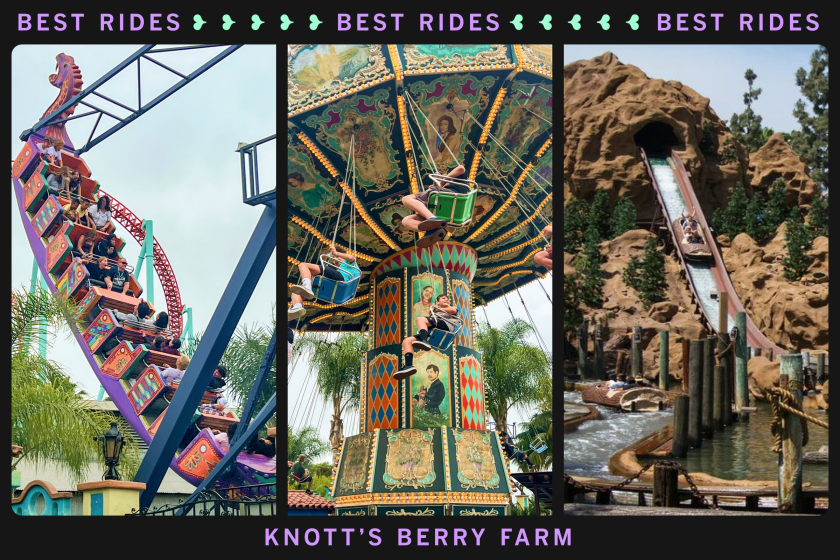
Every ride at Knott’s Berry Farm, ranked
What began in the 1920s as a family-run roadside berry and tea destination has become a thriving SoCal theme park — and a fried chicken haven.
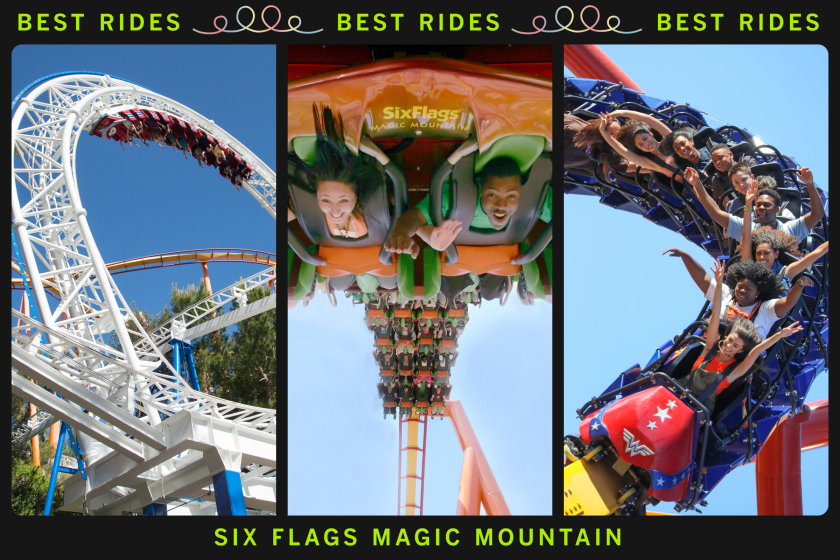
Every thrill ride at Six Flags Magic Mountain, ranked
The Valencia amusement park is cherished for its mix of coaster styles — be it wooden, loop-based, single-rail or ones with mind-confounding seats that rotate 360 degrees.
More to Read
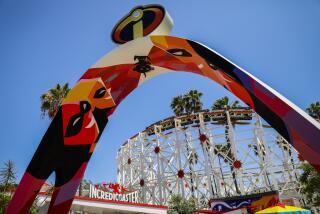
Riders at Disney California Adventure evacuated from stopped roller coaster
July 1, 2024

Knott’s Berry Farm encourages customers to snitch on line-jumpers, vows to kick cutters out
June 5, 2024
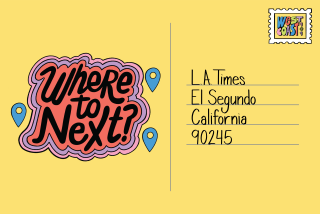
Tell us: What’s the most extraordinary West Coast experience?
May 16, 2024
Sign up for The Wild
We’ll help you find the best places to hike, bike and run, as well as the perfect silent spots for meditation and yoga.
You may occasionally receive promotional content from the Los Angeles Times.
More From the Los Angeles Times

How to have the best Sunday in L.A., according to Emma Roberts
July 4, 2024
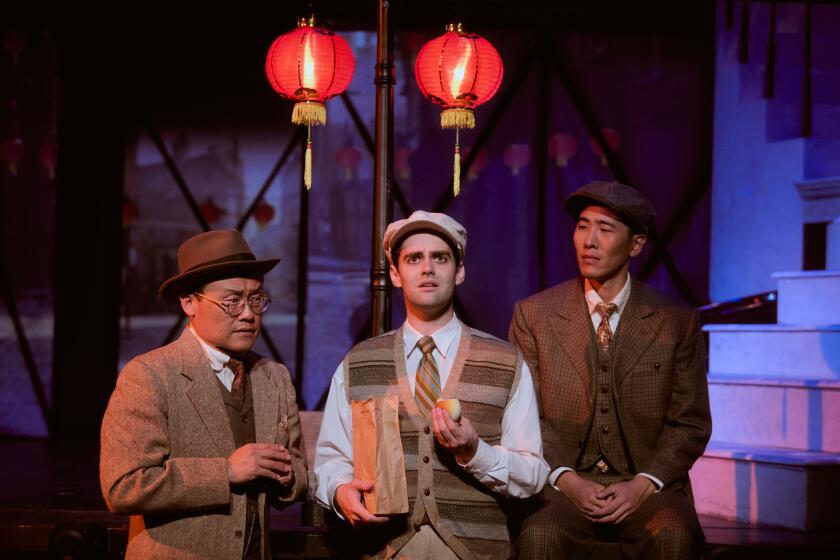
Entertainment & Arts
D.W. Griffith stoked racism with ‘Birth of a Nation.’ A playwright imagines what happened next
July 3, 2024
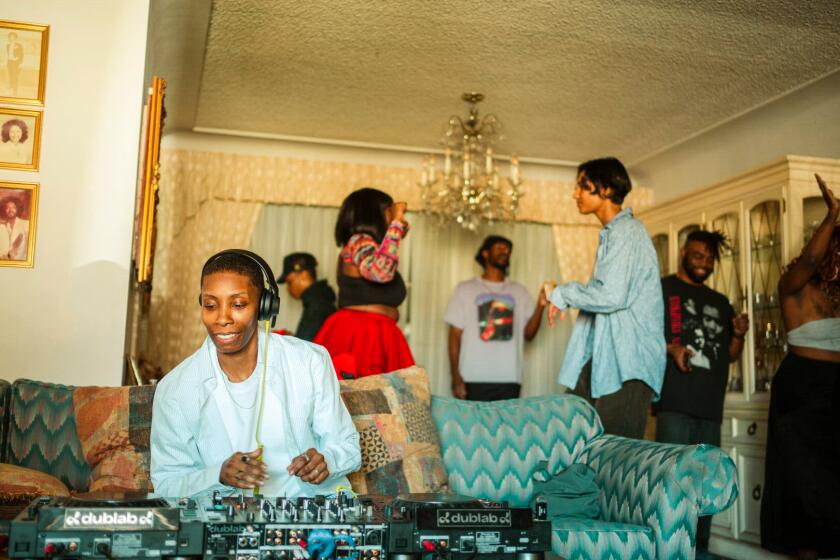
South L.A.’s hottest dance party happens at ‘Granny’s house’ — and it feels revolutionary

At MOCA, ice sculptures comment on climate change. It’s art that drowns in good intentions
July 2, 2024

COMMENTS
ALL RIGHTS GO TO TRAVELLER'S TALES!Logos/games in order of appearance:00:00 Intro00:07 circa 199100:22 circa 199200:45 circa 199300:59 circa 199401:57 circa ...
I always liked this intro.(Recorded from Buzz Lightyear of Star Command - PSX)
if you want this logo to make opening game logos here:https://drive.google.com/file/d/1lCO_TVBhGN6iSPxtB7oUA5K9Vf6FwK73/view?usp=sharing
Traveller's Tales is a British video game developer and a subsidiary of TT Games.Traveller's Tales was founded in 1989 by Jon Burton and Andy Ingram. Initially a small company focused on its own content, it grew in profile through developing games with larger companies such as Sega and Disney Interactive Studios.In 2004, development on Lego Star Wars: The Video Game started with Giant ...
The cliff and Quentin move to the right to leave room for the Traveller's Tales text to fade, but spread out and having "O X F O R D S T U D I O" under it. Above it appears a silhouette of Oxford's skyline. Technique: 3D animation. Audio: A cheerful-sounding camp-like theme with a faint choir, composed by Aaron Szpakowski. Audio Variants:
Traveller's Tales is a British video game developer and a subsidiary of TT Games. Traveller's Tales was founded in 1989 by Jon Burton and Andy Ingram. Initially a small company focused on its own content, it grew in profile through developing games with larger companies such as Sega and Disney Interactive Studios. In 2004, development on Lego Star Wars: The Video Game started with Giant ...
Background: Traveller's Tales is a British video game developer that was founded in 1989 by Jon Burton and was fully established a year later. In 2005, it has established it's publishing division, "TT Games". In 2007, it was acquired by Warner Bros. Interactive Entertainment and is now a development division since then and is currently known for the LEGO® games. It's first game was Leander ...
Traveller's Tales was a British video game developer that was founded in 1989 by Jon Burton and was fully established a year later. In 2005, it has established its own publishing division, "TT Games". Nicknames: "TT", "Puggsy's Ship" Logo: Over a black background, we see two stylized "T"'s spinning and slowly zooming away from us. Suddenly, a meteor appears in the background and flies straight ...
Background: Traveller's Tales is a British video game developer that was founded in 1989 by Jon Burton and was fully established a year later. In 2005, it has established it's publishing division, "TT Games". ... The still version has silence or the opening theme of the game. Availability: Can be found on Mickey Mania: ...
7 Toy Story. With 1995's Toy Story video game, Traveller's Tales not only proved its penchant for creating widely successful movie tie-in games but also set the industry precedent of releasing ...
Traveller's Tales company logo from 1998 of PlayStation 1 game A Bug's life.
The 3D animation seen during the intro sequence is not dissimilar to the opening included in Sonic 3D Blast, which is unsurprising since Traveller's Tales developed both games! Let us start with the people behind Puggsy. It was humble beginnings for Traveller's Tales. Business was different for the company in 1993.
Sep 23, 2008. Traveller's Tales. LEGO Dimensions: Fantastic Beasts and Where to Find Them Story Pack. Nov 18, 2016. Traveller's Tales. LEGO Dimensions: Ghostbusters Level Pack. Jan 19, 2016 ...
Traveller's Tales is a division of its parent company, TT Games. It is responsible for the creation of many LEGO video games. They have created the main versions of most LEGO games 2005 onwards, while the portable versions being created by other third party companies and TT Fusion at the present time. Traveller's Tales was re-established into the TT games group and now is owned by Warner Bros ...
Since the creation of Traveller's Tales in 1989, and through to TT Games Studios as part of the Warner Bros. Interactive Entertainment family, we have been driven to make quality family-friendly titles that everyone can enjoy. From popular IP hits including Marvel, Batman and Harry Potter to the platformers and racers of yesteryear. ...
The words: "Traveller's Tales" are in a Medieval style font with the yellow outline, later fade in. Variants [] There's a still artwork version of the logo that exists on a white background or a black background. ... The opening theme of the game. 2nd logo (1993-1995): We hear a loud "BANG" sound when the meteor explodes, followed by the sound ...
Watch on YouTube "It's like riding a bike," Burton explains. "I have to fit it into a 4-meg cart. Adding in Super Sonic was nine new sprites. Well, you only have 80 sprites to begin with.
Traveller's Tales Vol. 1 - Traveller's Tales features 300 short fiction pieces collecting slices of life from the universe of the Traveller role-playing game. Whether you are looking for exciting ground and space combat, unusual worlds and societies or even insight into alien psychology, there's something for you inside these covers. Each of the vignettes comes with gaming notes, full of ...
From "Crash Twinsanity" for PS2.
Hello everyone! My name is Dulce Isis Segarra and I am a Character Artist currently working at Traveller's Tales in Knutsford, UK. I come from Elche (Spain) and there I started my studies in game…
This is a SubReddit to discuss the LEGO Indiana Jones theme and all related products such as video games, films, browser games, etc. We have also broadened the topics to include the Adventures theme with Johnny Thunder. This was the LEGO theme during the 1990s and 2000s in the same vein as Indiana Jones. Lets make this a great Sub!
At CNN Travel, we tapped our network of contributors for nominations for our inaugural list of America's Best Towns to Visit.We evaluated their favorites and winnowed the finalists to 10 by ...
La nostalgia :)
On the latest addition to its fleet, Disney marries thrill with the magic of its stories in films and park sites that have been loved by kids and kids at heart through the years.
A Look at Traveller's Tales (TT Games)A quick history and overview of Traveller's Tales. over the next few days, we will be covering some of Traveller's Tal...
Times theme park critic Todd Martens was handed a wild assignment: Rank every theme park ride in Southern California. The mission was dizzying, literally, as he spent months fastening his seatbelt ...